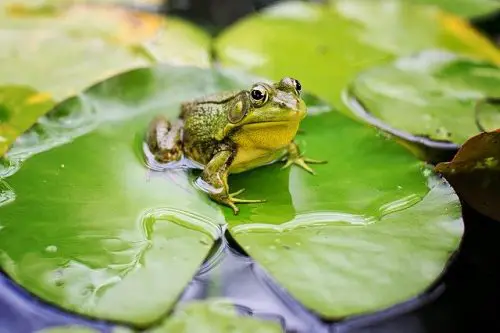Are you curious to know how cold-blooded animals stay warm? Well, you are definitely in the right place. In this article, we will be revealing amazing secrets on how these animals keep warm.
As we all know, warm-blooded animals are capable of producing heat to adapt to the cold environment. It’s like having naturally heated pads or heat reservoirs. Their bodies generate heat by burning up already consumed energy giving foods during digestion.
Birds and mammals such as humans are examples of warm-blooded animals.
The cold-blooded animals on the other hand are not so lucky. They cannot generate their own body heat but they definitely can regulate it. If not properly regulated or handled, these animals are at risk of becoming “torpid” if the weather gets too cold.

Torpor [1] is a state of decreased psychological activities much like falling asleep and also makes the rest of the body to slow down. When torpor occurs, the heart beats slowly, the body temperature falls and the lungs almost collapse. These animals must not let themselves get frozen, else they might die.
Insects, reptiles, fishes, and amphibians such as frogs are examples of cold-blooded animals.
Amazing Ways Cold-Blooded Animals Keep warm
Despite being cold-blooded, we can see that these animals are still very vulnerable to the cold. This article is aimed at learning the ways these animals overcome this very peculiar situation.
Rescued By The Depths Of The Earth
When winter arrives and begins freezing over every surface like ponds, the mud at the bottom remains a few degrees above the freezing point. Animals like frogs bury themselves in the mud at the bed of ponds while snakes and lizards burrow down into the soil.
The Thermoregulation Mechanism
Cold-blooded animals stay warm through either of these three thermoregulation mechanisms. There are; poikilothermy, heterothermy, or ectothermy.
Poikilothermy in situations where the animals experience fluctuations in their internal temperatures but their core temperature adapts to the temperature of their surrounding environment.
Ectothermy is when these animals make use of their external environment like the earth, water, sun, etc. to regulate their temperature.
Heterothermy is a situation where animals vary between self-regulating their temperature or letting their surroundings regulate it for them. Animals that engage this mechanism could be said to have exhibited characteristics of both poikilothermy and homeothermy.
While a few use one or two of these mechanisms, most of them find it more effective to use all of them simultaneously.

Tapping Into The Sun’s Warmth
They usually bask in the sun to stimulate their metabolism. This later leads to a spike or boost in their energy. The small animals experience heat loss faster than the large animals but they replenish faster. So when you see a turtle resting on a big hard rock with his shell facing the sun, know that he isn’t sun tanning rather he is refueling his energy or charging up.
Hibernation
This is one word everyone is used to, especially when referring to animals like bears and beavers. To us, it’s when animals sleep for an extended period of time. But in reality, it is a strategy used by animals to preserve energy when food is scarce.
It has the same characteristics as when an animal is experiencing torpor only difference is this isn’t deadly. Both warm-blooded and cold-blooded animals can hibernate. The warm-blooded animals use a lot of energy during the hibernation process which in turn causes a drop in their body temperature.
Due to their internal heat generation abilities, they need a lot of fat if they plan to stay liberated for an extended period of time.
The cold-blooded animals, on the other hand, need little energy during hibernation. This means they need less fat since they go underneath to rest. They prevent all external movement and “ play dead” as a protective measure.
Protein production
After a few years of research, an associate professor of biology at the University of Rochester, Mr. Michael Welte discovered how cold-blooded animals were able to stay warm in harsh weather conditions. He published all his findings in the Journal of Cell Biology.
What makes his research so exciting was that it was carried out at the molecular level, giving us a glimpse beneath the skin of these animals.
The key to their survival is the efficient production of proteins. That is making sure that their body’s proteins are made at the right time. To do that, every cell in their body has an assembly line which is partly driven by motor proteins.
These motor proteins take the RNA from the DNA which is found in their cell’s nucleus, delivers them to the end of the assembly line containing special organelles called ribosomes which finally make the protein. This is a cold-blooded animal regular internal routine.
But during the cold weather, the assembly line in charge of producing the proteins slows down, causing an imbalance in protein production. This is potentially dangerous as it could stop protein synthesis altogether. This is where Welte’s scientific breakthrough comes in.

After watching the fruit fly, he discovered a special molecule called, Klar. Klar keeps the protein production balanced by “controlling cellular transport”. Klar slows down the motor proteins carrying the RNA which balances out with the rate of protein production. This restores protein synthesis to order.
Daily living habits.
To stay warm these animals engage in various activities like stretching their limbs under the sun and changing their skin color. Their food diet is also a heat generation mechanism. Foods that aid body fat generation is one of their main dishes. But excessive body fat causes overheating which could eventually cause death.
These are the various ways cold-blooded animals stay warm. They might look small but they definitely have their work cut out for them in the winter.
Glossary
- Britannica [Link]




